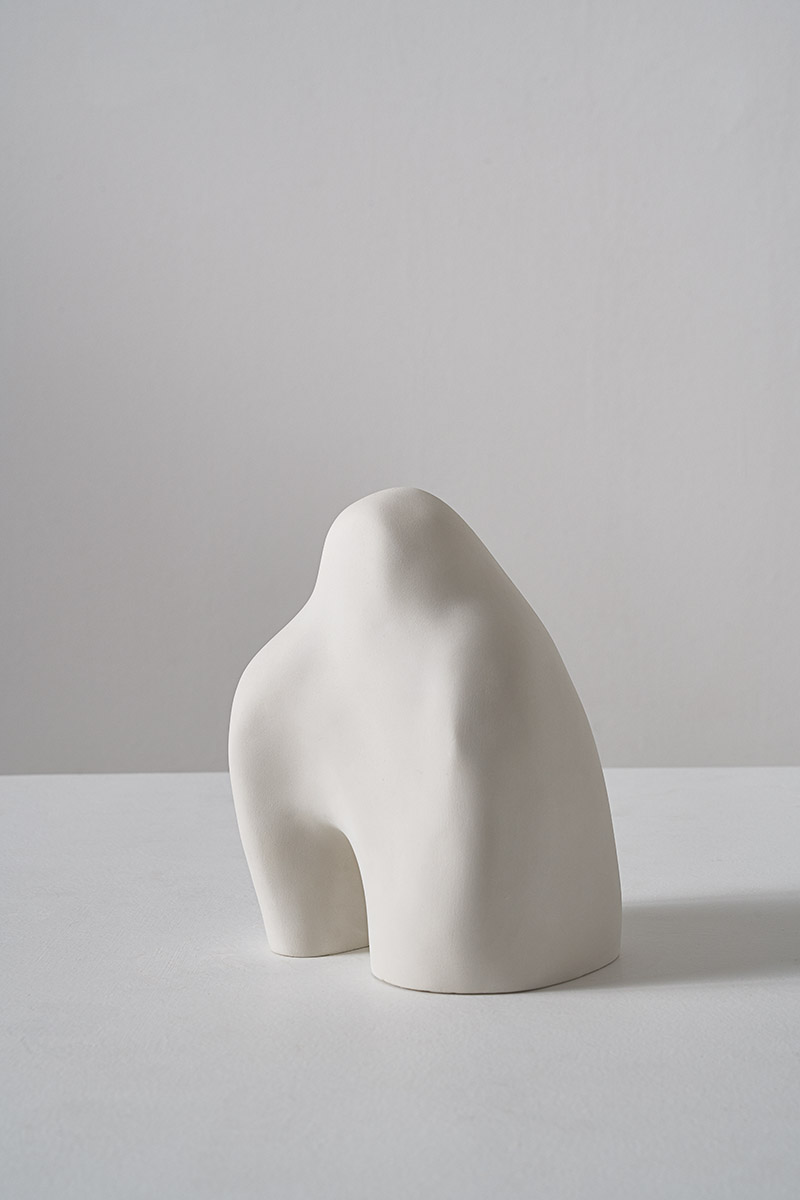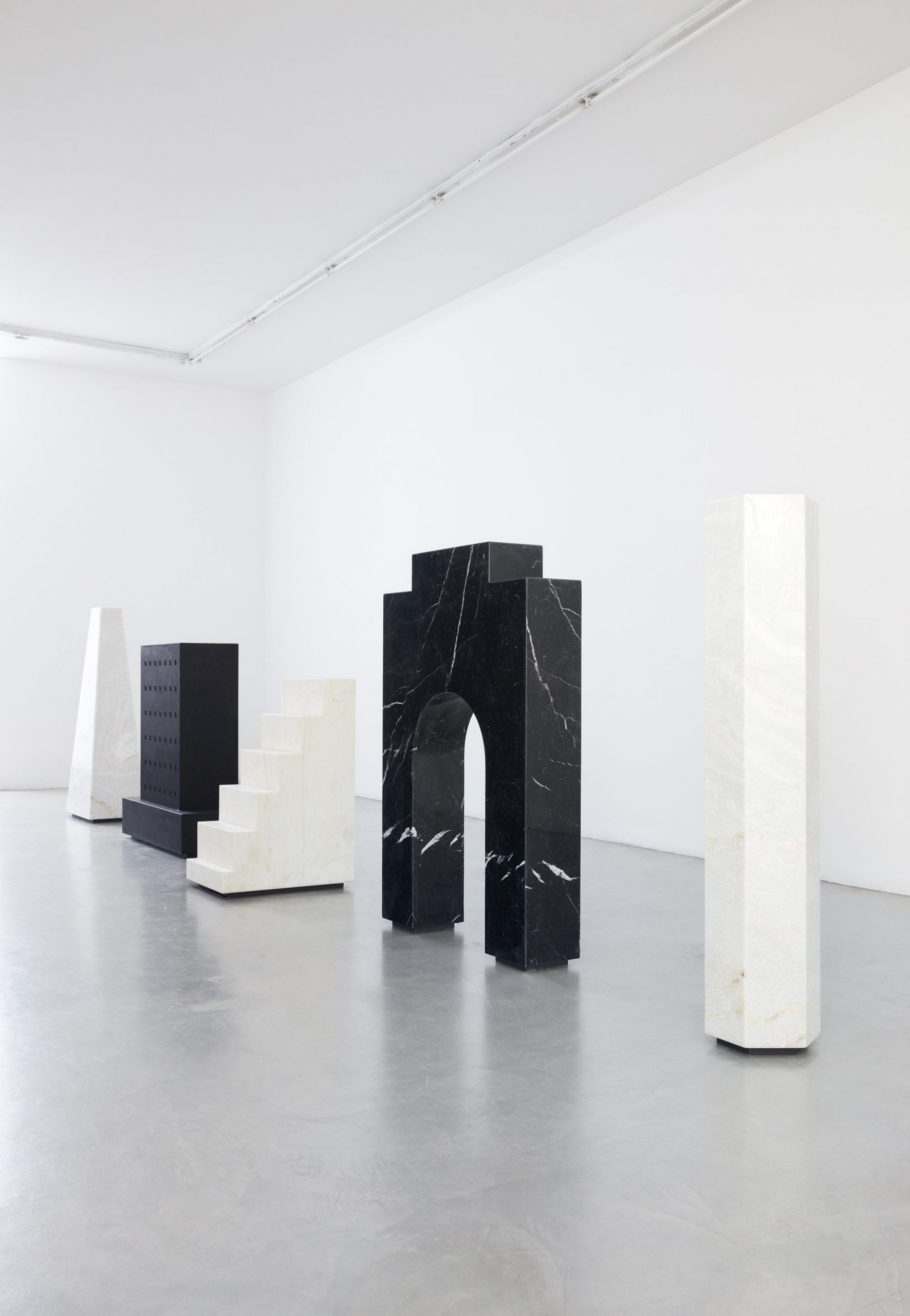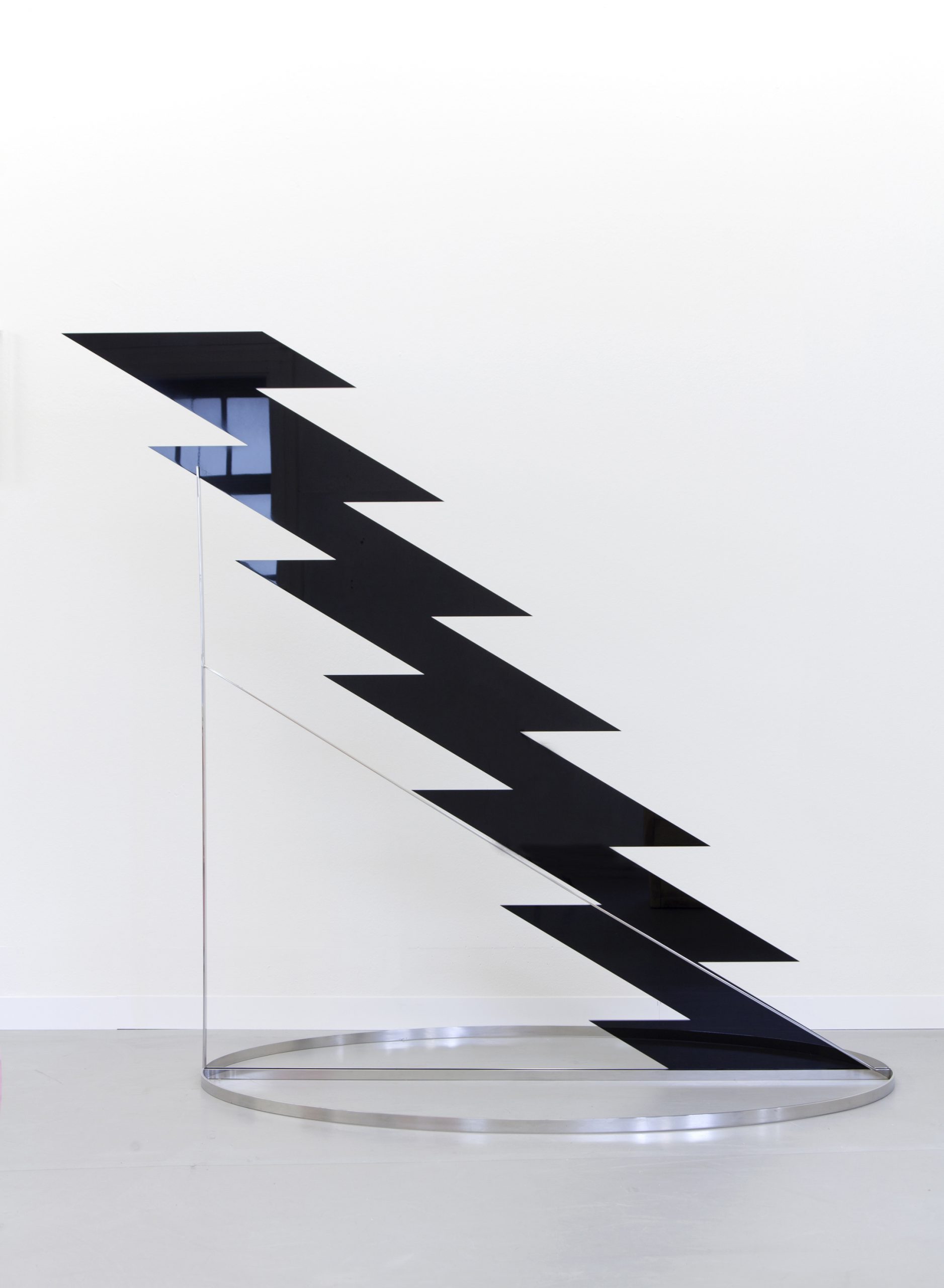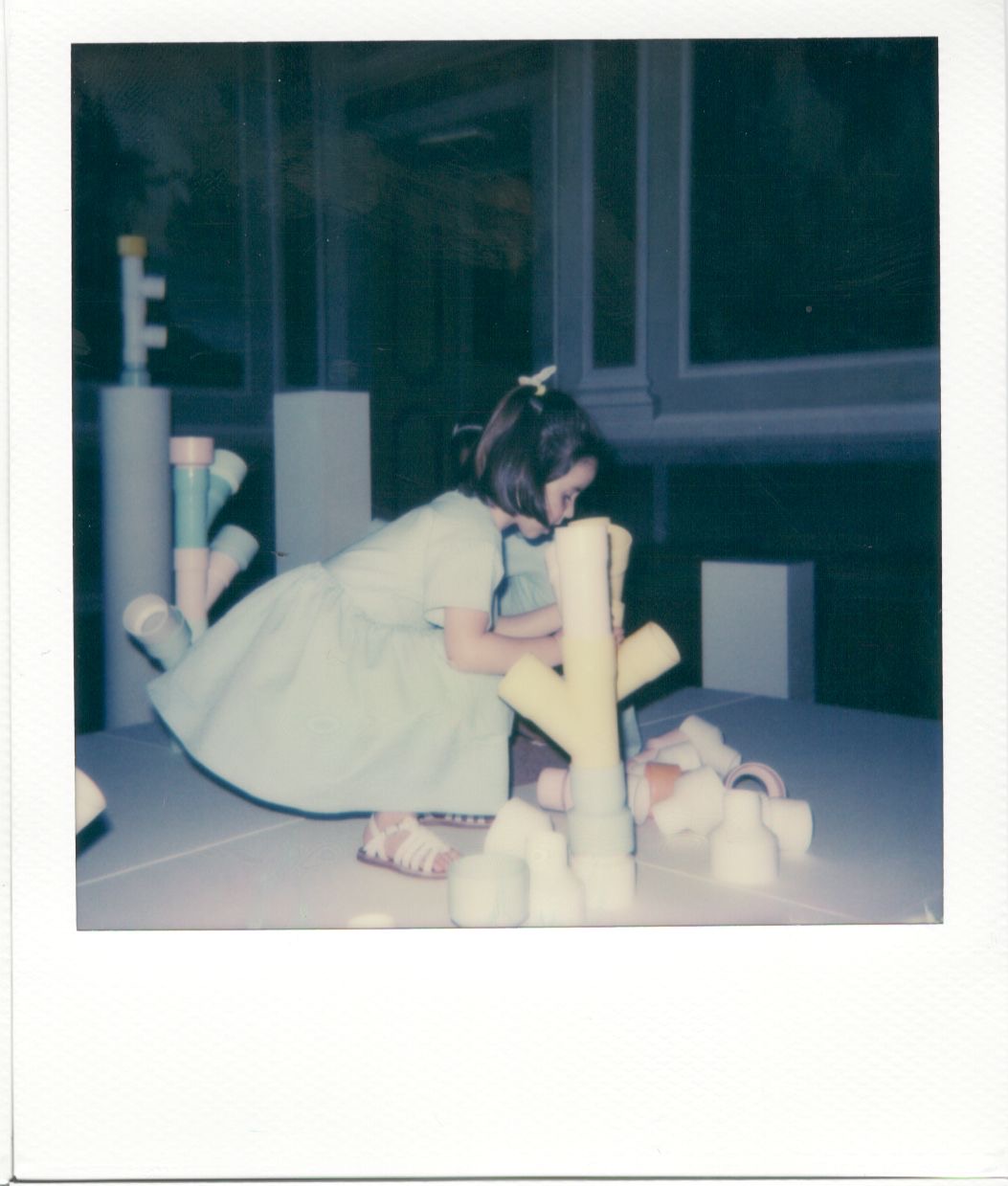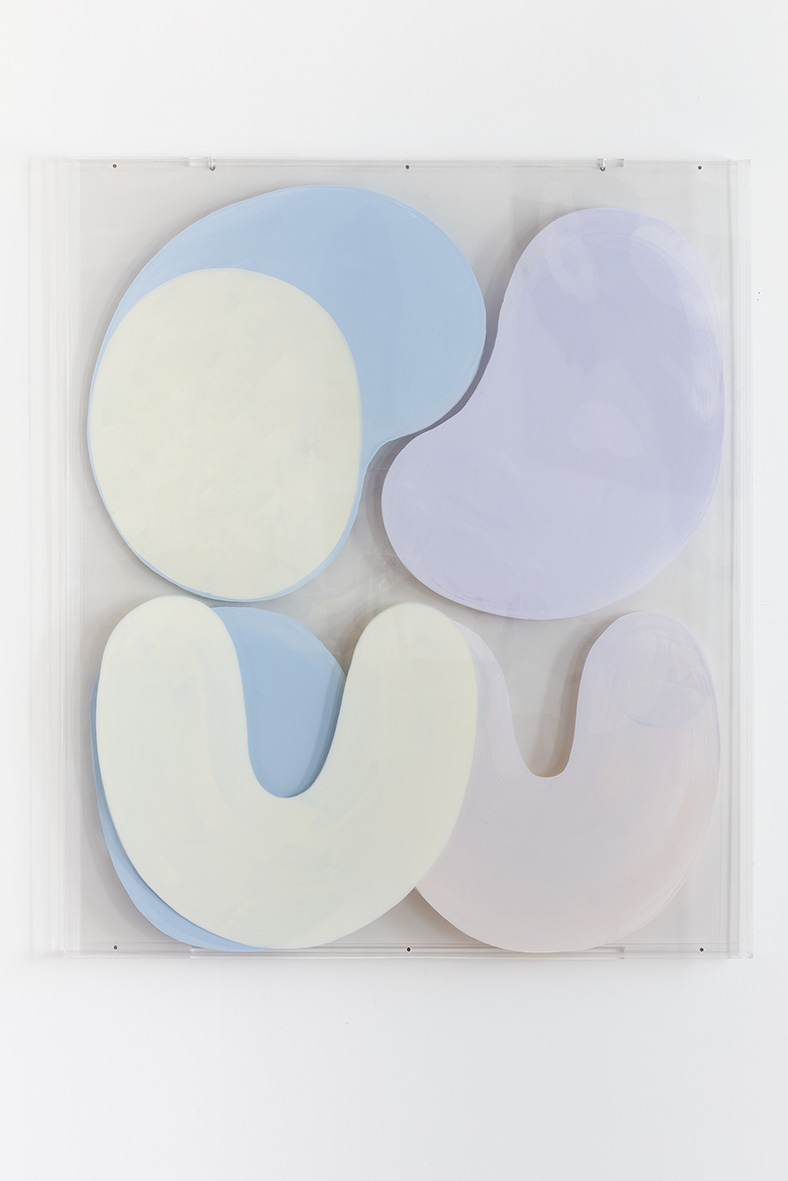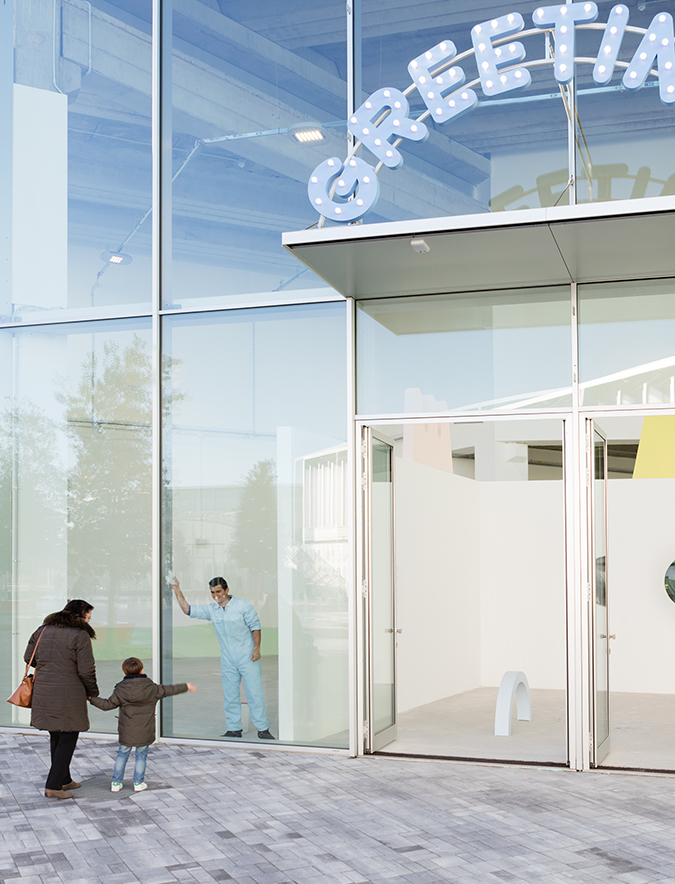
Alice Ronchi’s sculptural practice is concentrated around the search for a tactile, spatial or emotional “contact”. In her sculptures and installations, everyday objects meet the world of invention and fantasy, while always remaining anchored to rigid modules of proportion and geometric precision. A reasoned dialogue between form and content is, in fact, a priority in the artist’s creative process, which begins with a careful phase of research and listening, in order to understand how many and which stories a material can tell, or activate, in different formal possibilities and interactions.
In your studio you have collected entire folders of drawings that, like a very personal dictionary of possible forms, await only the right material, place and relational and spatial opportunity to be declined and configured in a work.
Yes, it is very true, I am surrounded by many ideas that I have not yet had a chance to realise. I try not to think about them too much, because otherwise I feel overwhelmed. I find myself in a state of fatigue, and then I am also afraid of seeing them realised by others, thus missing the opportunity to give them life. I know this is a natural process, nothing is properly ours, and everything originates from a shared dialogue and influences, but I prefer not to think about it.
Often I accumulate these ideas and drawings of works that are not yet realised, because when the opportunity to work on an exhibition appears, I have already changed compared to when I created them. Sometimes the expressive needs are already different, as I often find myself interpreting the place and the people who live there, and establish a direct dialogue with the space of the exhibition. This site-specific approach eventually makes me want to only create new works that I have never thought of before.
In fact, despite my love for materials, shapes and objects, my main interest is directed to people and their emotions; working invisibly on their gaze and their spirit is what fascinates me. I haven’t shown it much, but it has always been easier for me to imagine, create and work on places and specific feelings rather than individual sculptural elements. So many of those as-yet-unrealised projects you mention are primarily environments or large sculpture ensembles.
Placing itself equally in between a playful and a minimalist character, and between organic and architectural, your work appears as a perfect synthesis of formal simplicity and emotional research, which generates forms that are able to speak to everyone through the universal language of wonder. The empathic predisposition of the forms you recreate allows your works to become dynamic catalysts for relationships and reactions. That’s the reason why you are often assigned site-specific commissions, mostly involving the public space, in contact with communities and people.
Inevitably, many of these public projects were suspended or even cancelled with the pandemic, which has also changed all possibilities of real “contact”, as well as our relationship with our senses, and between human beings and the work. All this must have eventually affected your production and your design practice. How do you think your practice and research have been influenced by this period? And what were the most evident consequences and repercussions on everyday life? How did your 2020 end?
The ever-growing desire was fortified in me to do something beautiful that could, even for a moment, excite people and justify our work even in such a time. 2020 was a really sad year and completely stationary, as it was for everyone, but it is with great joy and surprise that I started 2021 with the arrival of new and exciting projects…
Since the beginning of this new year, you have received a series of new commissions that have finally brought you back into the game, rethinking and reworking all these aspects in a new way, despite always facing them with that creative artisan spirit of “making”and solving that has always characterised your work. As in the past, many of the projects that will be revealed in the coming months will see you working in relation to public space, which forces the works to engage with broader communities, and not necessarily just art people…
This requirement forces the artist to rethink their role in society. In this new phase of recovery, how do you think this might change or be differently recognised within the art system?
I hope that there will be an increasingly close and extended dialogue with art. I hope that artists will be given the opportunity to demonstrate to different communities that art deals with something intangible but necessary, for it has the ability to move within and touch its interlocutors. I hope that there will be a growing awareness of the potential of arts, not only in a decorative role to adorn cities, but as something that can potentially move them, entertain, and activate.
The challenge is very high, both for us as artists to take on this responsibility, and for the rest of the public to welcome it. I don’t blame the skeptics, but one curious glance is enough, and it will be worth it.






















